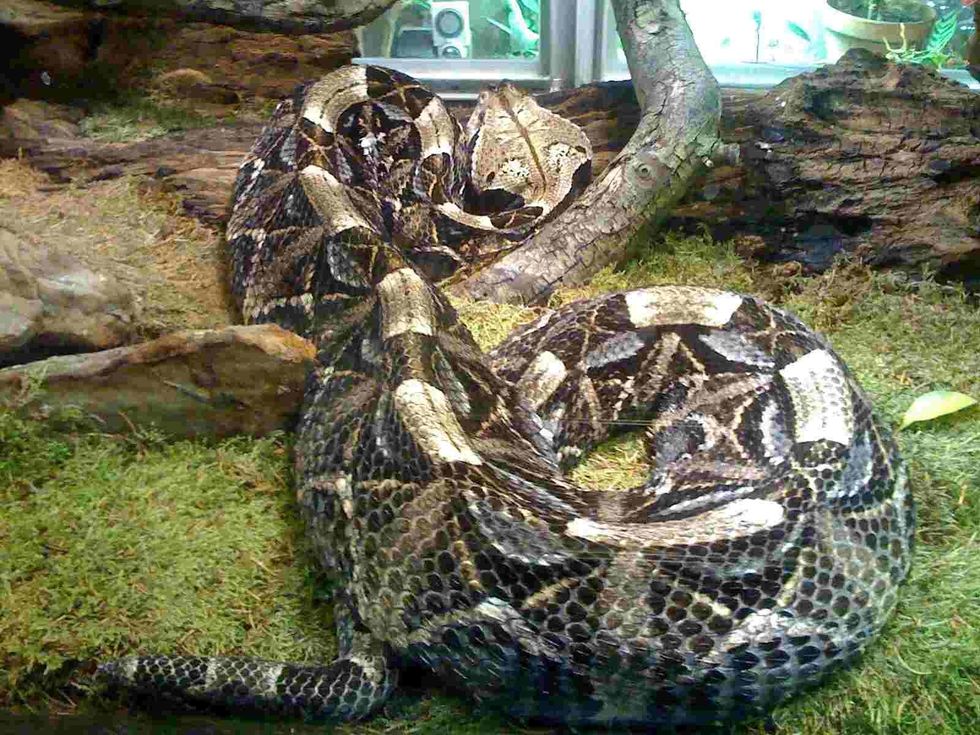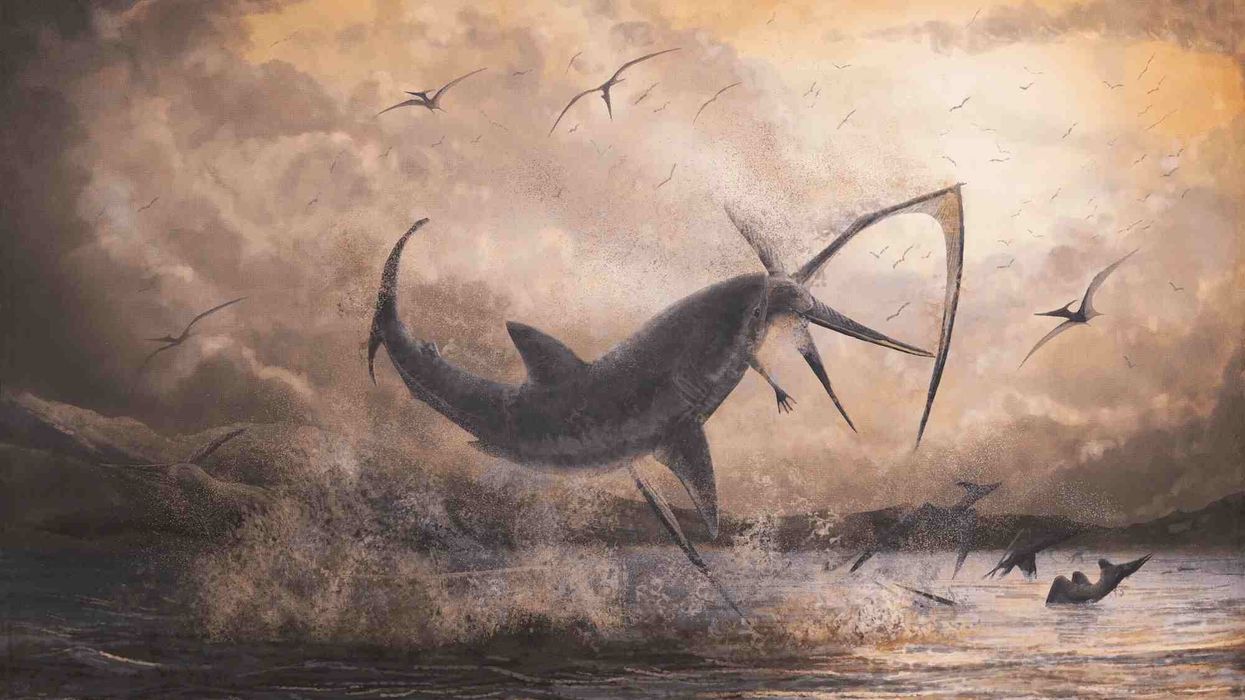The subfamily Hydrophiinae comprises some of the world's most venomous sea snakes. Unlike the terrestrial snakes that can move on the ground as well as in water, sea snakes cannot survive on land.
These snakes are entirely adapted to the aquatic existence except for the ‘sea kraits’ which is a genus consisting of semi-aquatic venomous snakes. Sea snakes are distinguished by their paddle-like tails and eel-shaped body.
There are 17 genera of sea snakes and 69 species. Some of the species are extremely venomous and aggressive while others may have a mild temperament and are not very aggressive until prompted.
The horned sea snake is one extremely venomous species.
The horned sea snakes or Hydrophis peronii goes by the name of ‘Peron’s sea snakes’ or ‘spiney-headed seasnake’ sometimes. These species of sea snakes can be found swimming in the tropical water of Western Australia, New South Wales, Coral Sea Islands, and the southern region of Papua New Guinea.
It can be found in other parts of the Pacific Ocean as well. They have peculiar pointed scales around their eye area that give the appearance of spines hence ‘spiny-headed sea snake’.
Are you eager to learn more fascinating facts about the sea horned snake? Then keep reading this article as more interesting facts are stated below.
For more relatable content, check out these scarlet snake facts and anaconda snake facts.
Horned Sea Snake Interesting Facts
What type of animal is a horned sea snake?
One of the most venomous sea snake species is the horned sea snake popularly identified as ‘spiny headed snake’, ‘coral reef snake’, and ‘Peron’s sea snake’.
What class of animal does a horned sea snake belong to?
The Acalyptophis peronii or Hydrophis peronii happens to be a marine creature that belongs to the class of Reptilia and Elapidae family.
How many horned sea snakes are there in the world?
The distribution range of the Peron’s sea snake is vast encompassing particularly the Australian continent. However, the total number of these snakes present in the world is not listed.
Where does a horned sea snake live?
The geographic range of distribution of this snake species incorporates the coast of the Philipines, Indonesia, the Strait of Taiwan, Guangdong, Vietnam, Thailand, and the South China Sea in Asia. It is observed in New Guinea, New Caledonia, the Coral Sea Islands, several coastal regions of Australia including the Northern Territory, Western Australia, Queensland, and New South Wales.
What is a horned sea snake's habitat?
The ideal environment for the Peron’s sea snake is the sandy sea bed and coral reefs. These snakes are particularly active at the night but they can be observed even in the late afternoon. The body structure of this sea snake enables them to hide and take shelter amongst the sponges and sea reefs.
Who do horned sea snakes live with?
Not much has been documented about the social behavior of this sea snake.
How long does a horned sea snake live?
The average life span of the Hydrophis peronii is not listed. Regardless, sea snakes, in general, can live as long as seven years in captivity.
How do they reproduce?
The exact age when the Peron’s sea snake attains sexual maturity is unknown. The male possesses two penises and, even though both are capable of functioning, only one is utilized during copulation.
As the process is lengthy the snakes must come on the surface of the water to breathe. The male is dragged by the female on the surface because it cannot disengage in the middle of copulation.
The Hydrophis peronii is viviparous and give birth to 10 offsprings. In the north of Australia, the gestation period of this snake is observed to be of six to seven months.
What is their conservation status?
The conservation status of the Acalyptophis peronii according to IUCN is of Least Concern. There is no apparent threat faced by these sea snakes but they get caught in the fishing net.
Horned Sea Snake Fun Facts
What do horned sea snakes look like?

All the species of sea snakes have condensed body structure and tail that is similar to a paddle. The Peron’s sea snake is approximately 4 ft (1.2 m) in length.
They have a small head and the diameter of their neck is 1/3 the size of the bulkiest part of their body. The color of this snake is very unique as it has a combination of gray, olive, and tan.
The dark patches appear very contrasting over their light-colored region dorsally. The scales on the male snake’s body are more dark and prominent. Their neck region consists of rows of 19-23 scales, the midbody has 23-31 rows.
The length of the snout-vent is nearly 48.4 in (123 cm). Shedding of skin is a common phenomenon amongst reptiles, similarly, horned seas snakes shed their skin every two to six weeks.
The sea snakes have specialized salt excreting glands present under their tongue to prevent an excess amount of salt accumulation. The eye region of this snake species is covered in pointed scales that are similar to horns or spines.
How cute are they?
This snake contains an extreme amount of venom that is fatal, which is not cute at all.
How do they communicate?
Not much is recorded regarding their communication skill. However, a sea snake is mostly a docile creature with mild temperament but can get aggressive and bite while threatened.
How big is a horned sea snake?
The approximate length of the Peron’s sea snake is 4 ft (1.2 m) and its body is shaped like an eel.
This snake is very small when compared to the yellow sea snake which is considered the longest of all the sea snakes of the Hydrophiinae subfamily. The longest yellow sea snake that has been documented so far is 9.8 ft (3 m) and the average size is within the range of 6.6 ft (2 m).
The yellow snake can be found in the Indian Ocean, New Guinea, Malaysia, Cambodia, China, and others.
How fast can a horned sea snake move?
The exact speed of the Hydrophis peronii is not listed.
How much does a horned sea snake weigh?
The weight of this species of sea snake is not listed.
What are the male and female names of the species?
There is no special term that has been assigned to the male and female species. The males are commonly referred to as male horned sea snakes and the females are called female horned sea snakes.
What would you call a baby horned sea snake?
baby snakes, in general, are known as snakelets, or neonates.
What do they eat?
The primary diet of the Acalyptophis peronii consists of small fish like gobies but it occasionally feeds on shrimp too.
Are they poisonous?
Yes, the Acalyptophis peronii of the Elapidae family is poisonous. It is poisonous enough to kill someone if not provided with medical care soon after. The amount of neurotoxin present in their venom can cause serious health damage, organ failure, and even death.
Would they make a good pet?
No, the Hydrophis peronii is a sea snake, hence keeping them as an exotic pet is very dangerous. The venom of this snake has a high concentration of neurotoxin which can be fatal. This snake may be passive but it bites once it feels threatened. It is better to leave them in their natural habitat.
Did you know...
Sea snakes do not have gills and for regular breathing, they must come to the surface of the water just like a whale! They have extraordinary nostril valves that shut underwater.
The word ‘Peronii’ in Hydrophis peronii and Acalyptophis peronii is given after the French naturalist François Péron.
Horned sea snakes have another common name, eyelash sea snakes.
Horned sea snake bites
This snake species of the Hydrophiinae subfamily is extremely poisonous. The temperament of this snake is more or less docile.
However, it can get aggressive if it feels threatened.
They cannot survive on land but people who are exposed to their geographical habitat are at risk. This venomous snake inhabits the coastal region and seabeds, therefore, people living near the coastal regions, swimmers, fishermen, and others who are directly or indirectly related are at risk.
The bite of this Hydrophis species can be minimal or not at all painful so there are chances that the bite may go overlooked. In such cases look for the teeth mark of Acalyptophis peronii, it can be very small.
The bite of the snake can prove fatal if not treated. The venom of the Acalyptophis peronii contains a strong neurotoxin that can paralyze and even kill a person.
Symptoms including vomiting, diarrhea, headaches, pain, weak muscles, stiffness, feeling of the thick tongue, unconsciousness, and dark-colored urine are all related to the bite of the spiny-headed sea snake.
It is a medical emergency, therefore, the victim must be taken to the nearest hospital as soon as possible because the first six hours after the bite are crucial for survival. Therefore it is important to remain cautious around its habitat.
What is the deadliest sea snake?
Sea snakes can prove to be fatal and the deadliest of them is the Aipysurus dubois labeled as the reef shallows sea snake and sometimes as Dubois' sea snake. This snake belongs to the genus Aipysurus and the family Elapidae.
This sea snake is almost 4.6 ft (1.4 m) and has a long tail.
The Aipysurus duboisii is considered the third most venomous snake after two other most venomous snakes; the inland taipan and the eastern brown snake.
The range of distribution of the Dubois' sea snake includes north, east, and west Australia near the coast, Papua New Guinea, New Caledonia, the Coral Sea Islands, the Indian Ocean, Timor Sea, and the Arafura Sea.
The ideal habitat of this marine creature is 262 ft (79.8 m) under the water amongst the coral reefs, sponges, and has seaweed.
The head of this snake is wide and the length of its fangs is 0.07 in (1.7 mm) that can yield a little venom. Dubois' sea snake is crepuscular hence mostly active at dusk and dawn.
Here at Kidadl, we have carefully created lots of interesting family-friendly animal facts for everyone to discover! For more relatable content, check out these common garter snake facts and smooth green snake facts for kids.
You can even occupy yourself at home by coloring in one of our free printable snake coloring pages.
*We've been unable to source an image of horned sea snake and have used an image of Gaboon viper instead. If you are able to provide us with a royalty-free image of horned sea snake, we would be happy to credit you. Please contact us at hello@kidadl.com.










